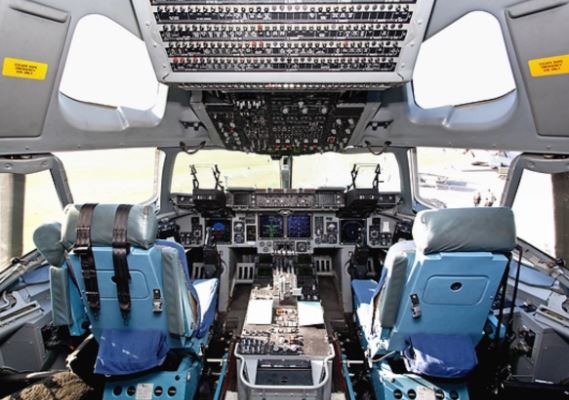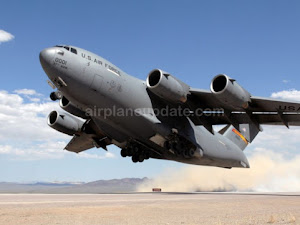Boeing C-17 Globemaster III Specs, Cockpit, Interior, Model, and Price – The Boeing C-17 Globemaster III is a large military transport aircraft. The C-17 Globemaster III was developed for the United States Air Force (USAF) from the 1980s to the early 1990s by McDonnell Douglas. The C-17 carries the names of two previous piston-engined military cargo aircraft, the Douglas C-74 Globemaster and Douglas C-124 Globemaster II.
The Boeing C-17 Globemaster III generally carries out tactical and strategic flight missions, transporting troops and cargo throughout the world, and has an additional role in medical evacuations and airborne assignments.

The Boeing C-17 Globemaster III made its maiden flight on 15 September 1991, and the first production model was sent to the Charleston Air Force Base, now known as the Charleston, SC Joint Base, on 14 June 1993. The first C-17 squadron, the Airlift Squadron 17, declared operationally ready in January 1995.
Initially, the Air Force deployed the C-17 Globemaster III just to fill the transportation gap between their C-130 tactical carrier and the large C-5 cargo aircraft. But this versatile aircraft has been the solution to military entry support for more than twenty years. During NATO intervention in Kosovo, the new C-17 was responsible for more than half of the total air transport missions for allied forces. In the War Against Terror, this aircraft has become the main carrier of heavy equipment to dangerous advanced operations bases throughout Afghanistan and Africa.
The Boeing C-17 Globemaster III is not a run-of-the-mill cargo carrier. But it was able to drag 80 tons and three M2 Bradley IFVs from large cargo and land on a short runway that was not paved. If all 213 of these transportation are activated at once, the US military can deploy 22,000 combat-charged troops or 36.4 million tons of equipment to hotspots around the world in a matter of hours, without interfering with other transportation.
The Boeing C-17 Globemaster III is the US government's high-level main VIP transporter. The C-17 Globemaster III, nicknamed "The Moose" is equipped with a series of comprehensive defensive countermeasures that rival most combat aircraft.

The C-17 Globemaster III is designed to operate from runways as short as 3,500 feet and as narrow as 90 feet. In addition, the C-17 can operate from runways that are not paved and not upgraded. This aircraft is operated by three crew consisting of pilots, co-pilots and loadmaster.
The C-17 Globemaster III fuselage is coated with a housing sensor like blisters to detect and track missile launches. After infrared or radar guided missiles were detected, aircraft computers automatically spread the next generation of POETS and GEN-X countermeasures, as well as the spread of the famous "wing bait" from flare bait.
The unique features of the Globemaster survivability, which includes fourfold flight control if the enemy missile manages to penetrate the laser defense shield, makes it different. However, that is only part of the extraordinary adaptability.
The Boeing C-17 Globemaster III is a US transportation that has many specialties, the cargo is too large and still lands on an unprepared runway. Thanks to a 5.5 meter wide cargo bay, the C-17 Globemaster III can accommodate almost all US Army machines, including Apache helicopters and even 70 tons of MBT Abrams. All the while still leaving legroom for several dozen passengers.

High-powered, four-engine, T-tailed military transport aircraft, multi-service C-17 Globemaster III can carry large equipment, supplies, and troops directly to small airfields on harsh terrain anywhere in the world. Large, sturdy, long-range aircraft handle large and heavy distances, destinations, and loads in unpredictable conditions. It has shipped cargo in every operation around the world since the 1990s.
Boeing has partnered with the US Air Force to maintain the C-17 Globemaster III since the first aircraft shipments in 1993. With a focus on high performance at affordable costs, Boeing provides support and maintenance for customers of the global C-17 Globemaster III in eight allied countries . The C-17 Globemaster III fleet has the best combined dollar in its class per flight hour and mission capability level, performing at the highest readiness level in the entire world.
The Boeing C-17 Globemaster III generally carries out tactical and strategic flight missions, transporting troops and cargo throughout the world, and has an additional role in medical evacuations and airborne assignments.

Boeing C-17 Globemaster III First Flight History
In the 1980s, the USAF realized that the C-141 fleet was aging and facing structural problems. McDonnell-Douglas developed the C-17 from the previous YC-15 and was smaller in lieu of C-141 and also to reduce the C-5 fleet.The Boeing C-17 Globemaster III made its maiden flight on 15 September 1991, and the first production model was sent to the Charleston Air Force Base, now known as the Charleston, SC Joint Base, on 14 June 1993. The first C-17 squadron, the Airlift Squadron 17, declared operationally ready in January 1995.
Initially, the Air Force deployed the C-17 Globemaster III just to fill the transportation gap between their C-130 tactical carrier and the large C-5 cargo aircraft. But this versatile aircraft has been the solution to military entry support for more than twenty years. During NATO intervention in Kosovo, the new C-17 was responsible for more than half of the total air transport missions for allied forces. In the War Against Terror, this aircraft has become the main carrier of heavy equipment to dangerous advanced operations bases throughout Afghanistan and Africa.
The Boeing C-17 Globemaster III is not a run-of-the-mill cargo carrier. But it was able to drag 80 tons and three M2 Bradley IFVs from large cargo and land on a short runway that was not paved. If all 213 of these transportation are activated at once, the US military can deploy 22,000 combat-charged troops or 36.4 million tons of equipment to hotspots around the world in a matter of hours, without interfering with other transportation.
The Boeing C-17 Globemaster III is the US government's high-level main VIP transporter. The C-17 Globemaster III, nicknamed "The Moose" is equipped with a series of comprehensive defensive countermeasures that rival most combat aircraft.

Boeing C-17 Globemaster III Specs
The Boeing C-17 Globemaster III has a maximum payload capacity of 170,900 pounds, and the maximum gross takeoff weight is 585,000 pounds.The C-17 Globemaster III is designed to operate from runways as short as 3,500 feet and as narrow as 90 feet. In addition, the C-17 can operate from runways that are not paved and not upgraded. This aircraft is operated by three crew consisting of pilots, co-pilots and loadmaster.
The C-17 Globemaster III fuselage is coated with a housing sensor like blisters to detect and track missile launches. After infrared or radar guided missiles were detected, aircraft computers automatically spread the next generation of POETS and GEN-X countermeasures, as well as the spread of the famous "wing bait" from flare bait.
The unique features of the Globemaster survivability, which includes fourfold flight control if the enemy missile manages to penetrate the laser defense shield, makes it different. However, that is only part of the extraordinary adaptability.
The Boeing C-17 Globemaster III is a US transportation that has many specialties, the cargo is too large and still lands on an unprepared runway. Thanks to a 5.5 meter wide cargo bay, the C-17 Globemaster III can accommodate almost all US Army machines, including Apache helicopters and even 70 tons of MBT Abrams. All the while still leaving legroom for several dozen passengers.

Boeing C-17 Globemaster III Engines
The Boeing C-17 Globemaster III is 174 feet long and has a wingspan of around 170 feet. It can transport cargo close enough to the battle area. The C-17 Globemaster III is powered by four fully reversible Pratt & Whitney F117-PW-100 turbofan engines.High-powered, four-engine, T-tailed military transport aircraft, multi-service C-17 Globemaster III can carry large equipment, supplies, and troops directly to small airfields on harsh terrain anywhere in the world. Large, sturdy, long-range aircraft handle large and heavy distances, destinations, and loads in unpredictable conditions. It has shipped cargo in every operation around the world since the 1990s.
Boeing C-17 Globemaster III Price
The Boeing C-17 Globemaster III is used not only by the United States Air Force, but also other allies, such as the Royal Air Force, the Australian Air Force, the Canadian Royal Air Force and NATO. The price of the latest C-17 Globemaster III aircraft is US $ 218 MillionBoeing has partnered with the US Air Force to maintain the C-17 Globemaster III since the first aircraft shipments in 1993. With a focus on high performance at affordable costs, Boeing provides support and maintenance for customers of the global C-17 Globemaster III in eight allied countries . The C-17 Globemaster III fleet has the best combined dollar in its class per flight hour and mission capability level, performing at the highest readiness level in the entire world.








No comments:
Post a Comment